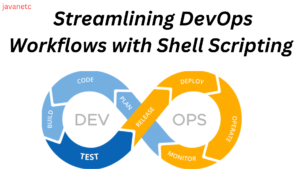Introduction
Crossplane, housed within the Cloud Native Computing Foundation, stands out as a revolutionary framework for navigating the complexities of the multi-cloud landscape. Acting as an extension of Kubernetes, it introduces an open-source control plane that harmonizes the management of cloud infrastructure across diverse environments. This Kubernetes-native platform facilitates declarative configuration, promoting portability and scalability, thereby addressing challenges associated with multi-cloud strategies. Crossplane’s role as a cornerstone in modern, agile, cloud-native application development and infrastructure management is underscored by its vibrant community and adaptability.
Table of Contents
What is Crossplane?

Crossplane
Crossplane is an open-source Kubernetes-native control plane that extends Kubernetes capabilities to manage cloud infrastructure and services. Key features include:
- Cloud-agnostic infrastructure management: Crossplane allows users to manage cloud resources across different providers and on-premises environments, ensuring a unified and consistent deployment approach.
- Kubernetes Native Experience: Built on Kubernetes, Crossplane leverages familiar tools and APIs for managing cloud infrastructure resources.
- Customizable Resource Definitions: Users can define custom resource classes, representing infrastructure resources, to tailor Crossplane’s behavior according to specific requirements.
- Infrastructure as Code (IaC) Approach: Crossplane treats infrastructure as code, enabling users to define and version configurations using popular code repositories like Git.
- Ecosystem of Providers: Crossplane supports various cloud providers through a growing ecosystem, allowing users to leverage existing integrations or create custom providers.
- Community Driven: As an open-source project, Crossplane has an active community supported by the Cloud Native Computing Foundation (CNCF).
- Scalable and Portable: Crossplane aids in achieving scalability and portability in cloud infrastructure, making it ideal for modern cloud-native application development and multi-cloud deployments.
Who Uses Crossplane?
Crossplane caters to a diverse user base, including:
- Cloud Service Providers: Offering managed Kubernetes services, they can use Crossplane to provide a consistent interface for customers across different cloud offerings.
- Enterprises with Multi-Cloud Strategy: Organizations leveraging multiple cloud providers can use Crossplane as a single control plane for consistent resource management.
- DevOps Teams: Utilizing Kubernetes for application deployment, DevOps teams can use Crossplane for unified provisioning and management of cloud resources.
- Application Developers: Building and deploying cloud-native applications, developers can use Crossplane to define and deploy application-specific infrastructure resources.
- Cloud Architects and Infrastructure Engineers: Designing cloud infrastructure solutions, architects can use Crossplane for flexible and extensible provisioning.
- Open Source Communities: Developing cloud infrastructure management solutions, open-source communities can extend Kubernetes using Crossplane for a Kubernetes-native approach.
What is A Control Plane, and Why do We Need a “universal” One?
Control Plane
A cloud computing control plane centrally manages and coordinates the provisioning, configuration, and management of cloud resources. A “universal” control plane provides a consistent interface for managing resources across various providers and on-premises environments, aiming to abstract complexities and present a unified control plane.

Why a “universal” control plane is needed:
- Simplified Management: Manages resources across different clouds with a common interface, simplifying tasks and reducing operational overhead.
- Consistent Operations: Ensures consistent operations, policies, and configurations across diverse environments, enhancing consistency and predictability.
- Portability and Interoperability: Promotes application portability and interoperability across different providers or clusters.
- Vendor Lock-in Mitigation: Abstracts away differences between providers, mitigating vendor lock-in and allowing flexibility in choosing or switching providers.
- Flexibility and Extensibility: Provides flexibility and extensibility in managing different resource types, allowing customization to specific requirements.
- Future Proofing: Adapts to changes in the infrastructure or technology landscape, providing a consistent interface and abstraction layer.
Why Does Crossplane Use The Kubernetes API?
Crossplane utilizes the Kubernetes API for managing cloud resources due to:
- Familiarity and Consistency: Leverages Kubernetes syntax, conventions, and workflows, making it familiar to many users in the Kubernetes community.
- Declarative and Kubernetes-Native: Follows the declarative model of Kubernetes, enabling users to define desired states using YAML manifests.
- Extensibility and Custom Resources: Utilizes Kubernetes’ custom resource definitions (CRDs) for extensibility and customization, allowing users to define custom resources.
- Ecosystem and Tooling: Benefits from the extensive Kubernetes ecosystem, including tools like kubectl, Kubernetes operators, and RBAC for robust management.
- Interoperability: Works across different Kubernetes distributions, cloud providers, and environments, ensuring a consistent approach to managing resources.
Do I have to Use Kubernetes?
While Crossplane is designed to be used with Kubernetes, it is technically possible to use Crossplane without Kubernetes in certain scenarios. However, the core design and features of Crossplane are optimized for use with Kubernetes. Leveraging Kubernetes provides full benefits, including its declarative and Kubernetes-native approach, extensibility through custom resources, ecosystem and tooling support, and interoperability with different environments.
What are The Advantages of using Crossplane?
- No Need to Write Code: Eliminates the need for coding, allowing users to define desired states using declarative YAML manifests.
- Developer-Friendly: Provides a developer-friendly approach for managing cloud resources through familiar Kubernetes-style YAML manifests, enabling version control and collaboration.
- Production-Ready: Stable, reliable, and suitable for production environments, with a mature ecosystem and community support.
- Drift Detection and Synchronization: Automatically identifies and corrects discrepancies between desired and actual resource states, ensuring consistent configuration.
- Satisfies Both InfraOps and AppOps Needs: Caters to the needs of both infrastructure operations and application operations teams, offering a unified control plane for managing resources.
Conclusion
Crossplane, as an open-source Kubernetes-native control plane, offers a unified approach to managing cloud resources and infrastructure as code. With widespread adoption across various user types, it serves as a cornerstone for modern cloud-native application development and multi-cloud strategies. Its reliance on the Kubernetes API, while not mandatory, enhances familiarity, consistency, and interoperability, making it a versatile and powerful tool in the cloud-native ecosystem. The advantages of using Crossplane, such as code-free management, developer-friendliness, and production readiness, further underscore its significance in simplifying and enhancing cloud infrastructure management.



